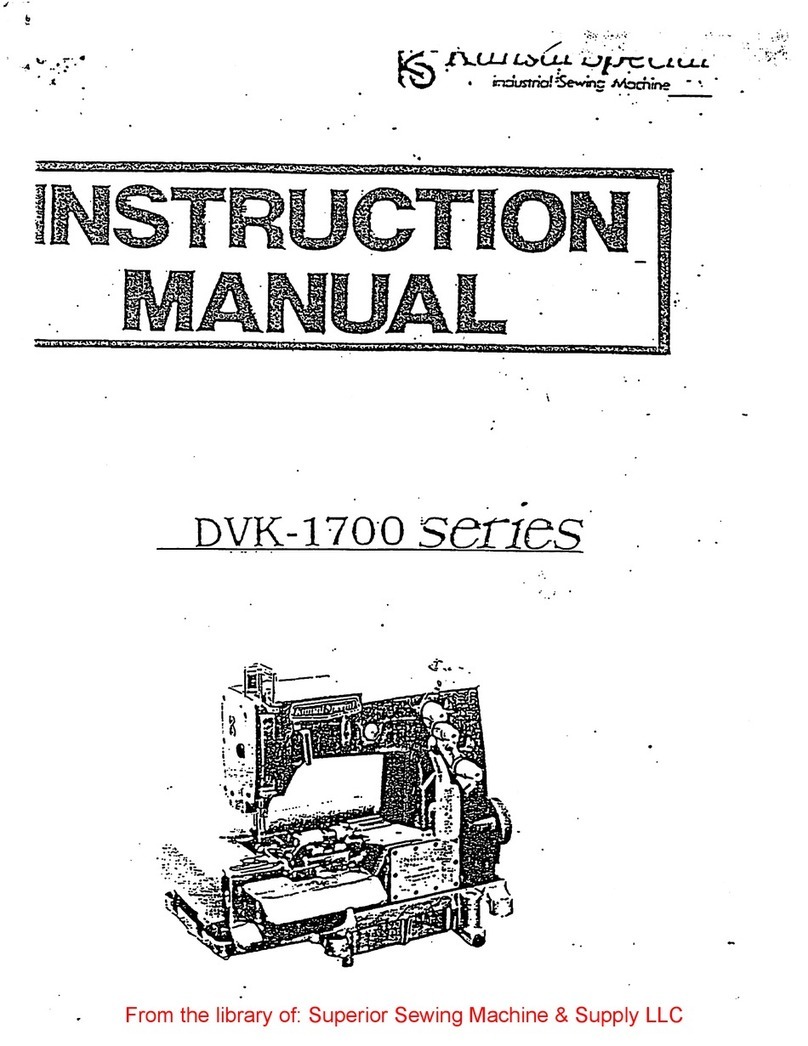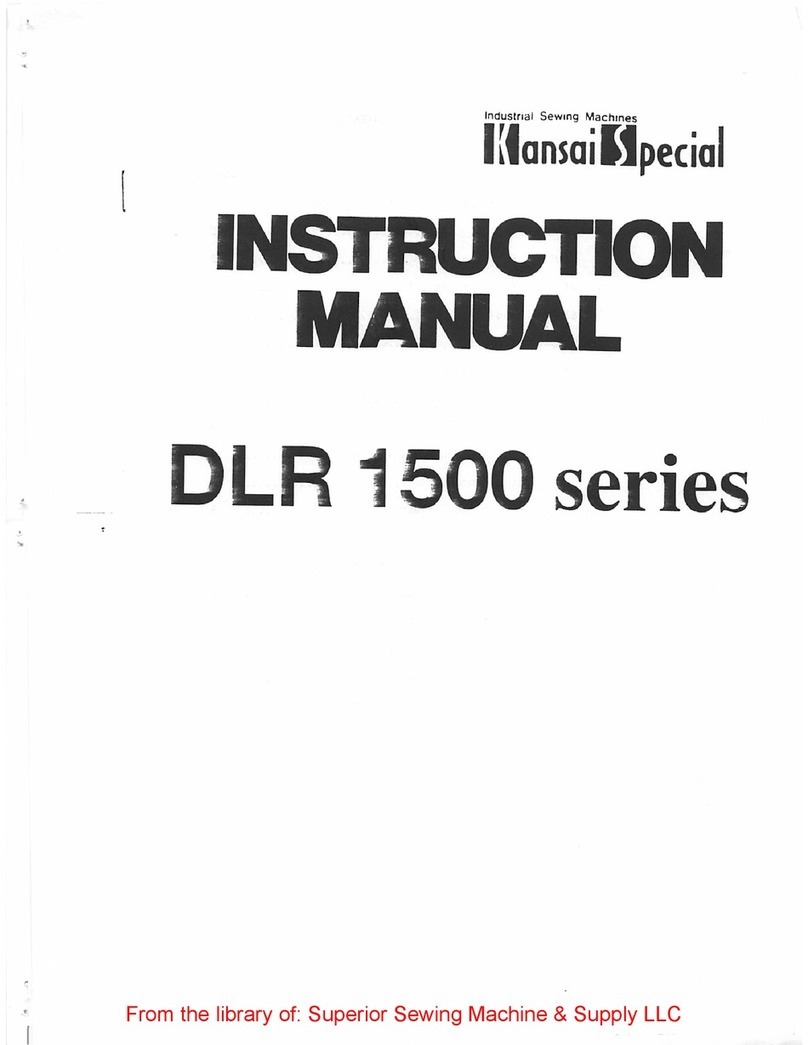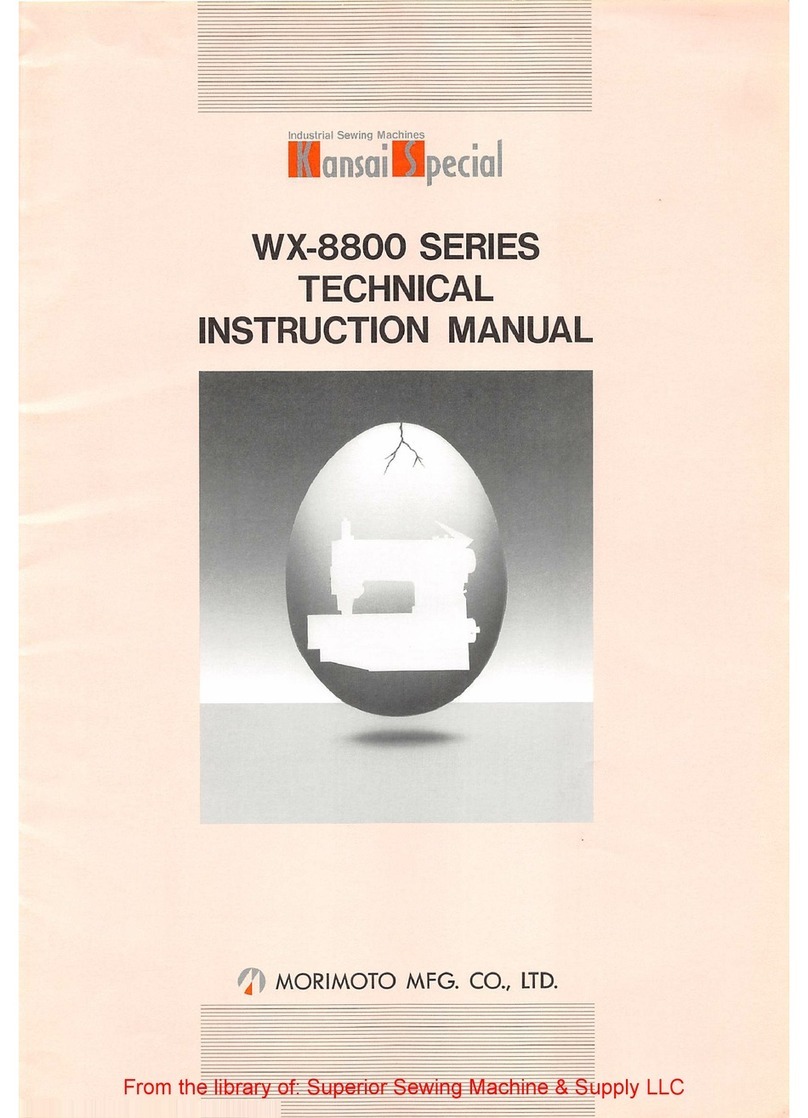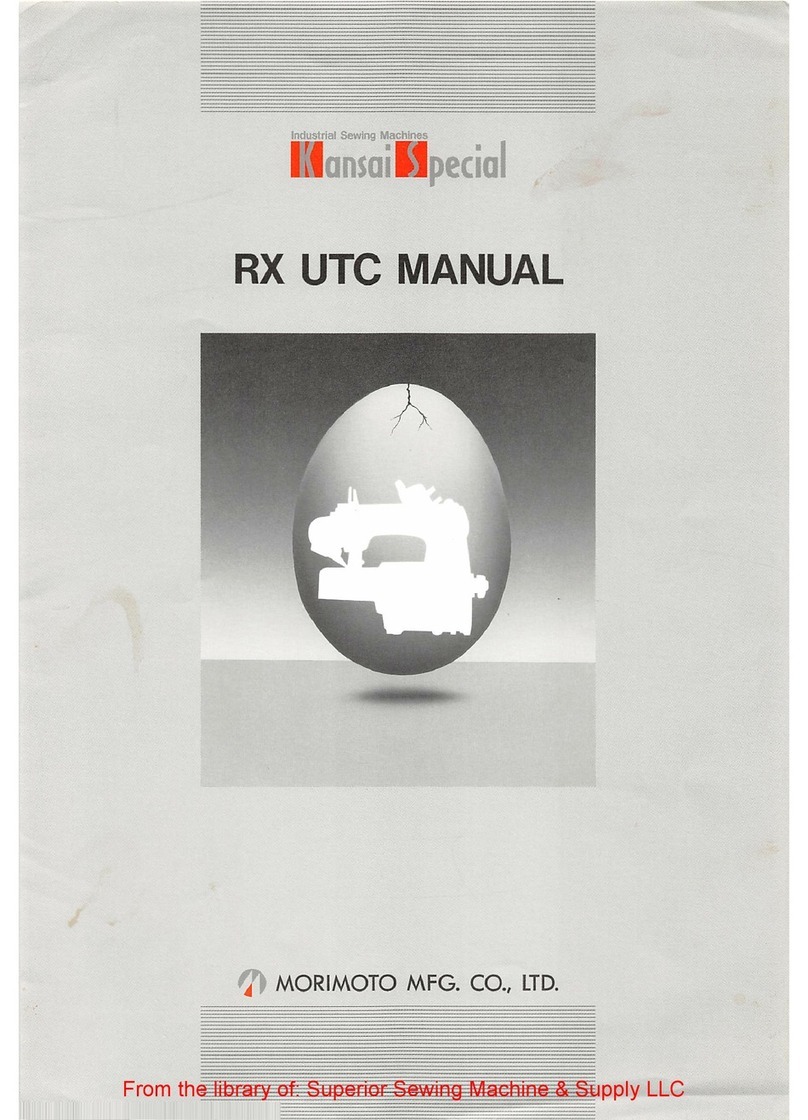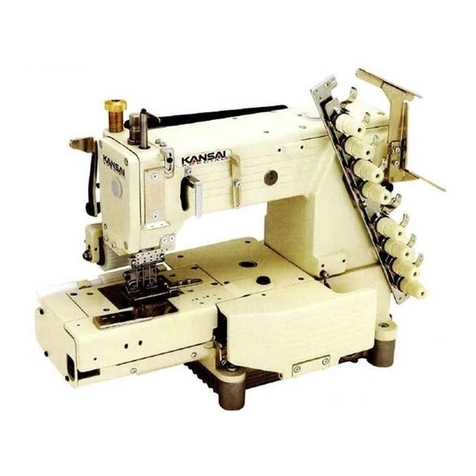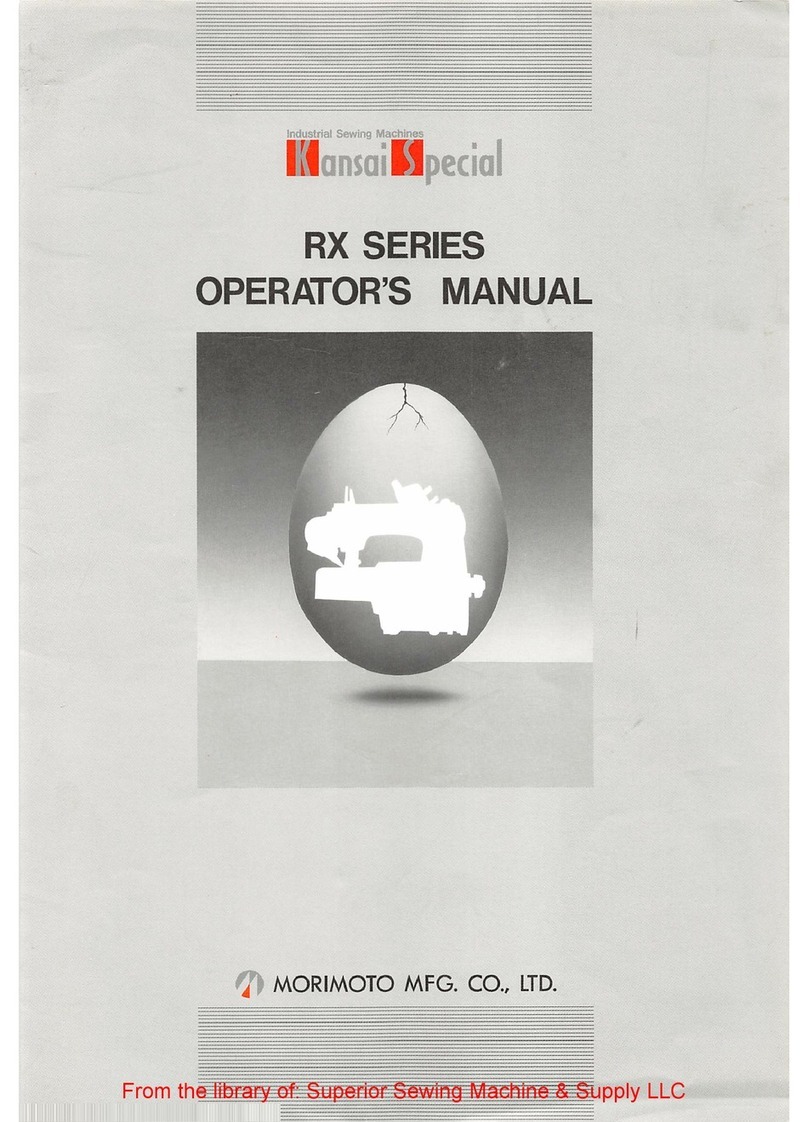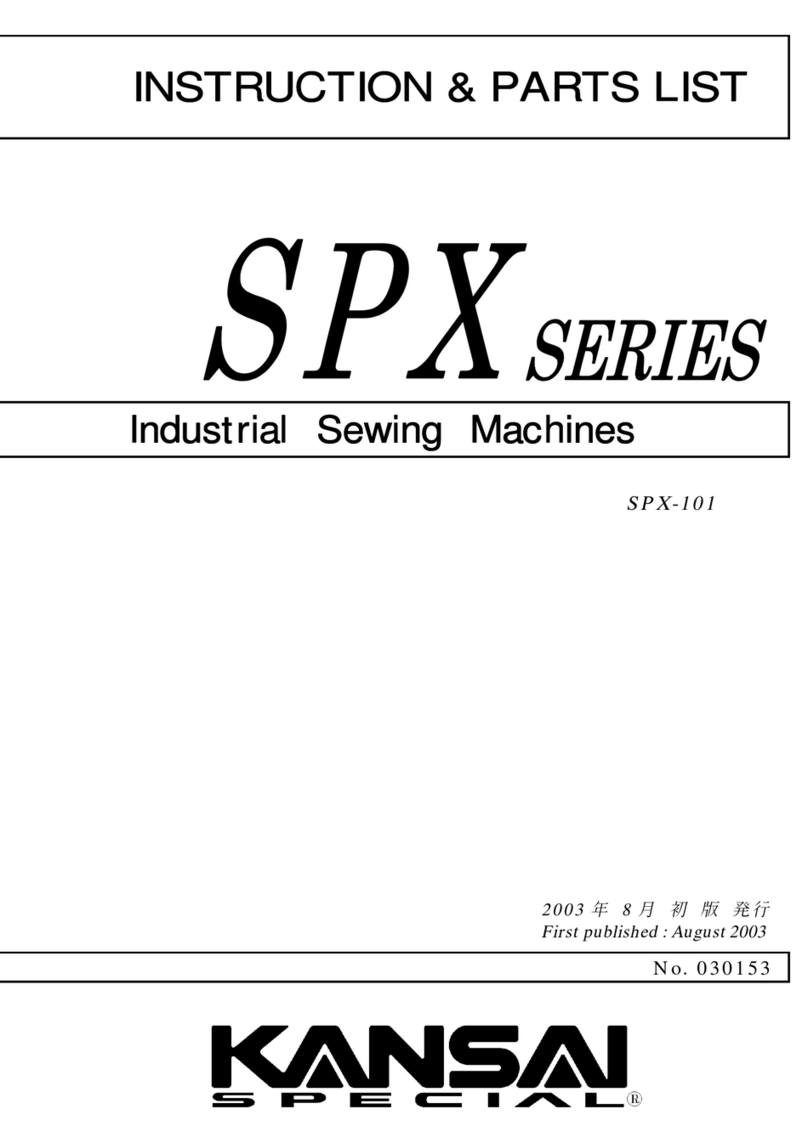
CONTENTS
1. SPECIFICATIONS
1-1 Stitch type ···············································1
1-2 Model ·····················································1
1-3 Diagrammatic sketch of the Series ··············1
2. NEEDLES & THREADING THE MACHINE
2-1 Needles ···················································2
2-2 Replacing the needle ·································2
2-3 To thread the machine ······························2
3. MACHINE SPEED
3-1 Machine speed & direction in which the machine
pulley runs ··············································5
3-2 Motor & belt ············································5
4. LUBRICATION
4-1 Oil ·························································6
4-2 To fill the machine with oil ························6
4-3 Replacing the oil and the oil element ···········6
5. SEWING MACHINE INSTALLATION
5-1 Cutting the machine table ·························7
5-2 How to install the machine ························8
6. TO ADJUST THE TIMING BETWEEN
THE UPPER AND THE LOWER SHAFT ·9
7. TIMING OF THE LOOPER TO THE NEEDLES
7-1 Angle for installing the looper and position of the
looper holder bracket································ 10
7-2 Timing of the looper to the needle ············· 11
7-3 Looper setting distance ··························· 12
7-4 Needle height ········································ 12
8. TIMING OF THE RETAINER LOOPER
8-1 Front to back position of the retainer looper ·· 13
8-2 Left to right position of the retainer looper ··· 13
8-3 Adjusting the height of the retainer looper ··· 13
8-4 Timing of the retainer looper to the needle ··· 14
9. ADJUSTING CLEARANCE BETWEEN
NEEDLE AND NEEDLE GUARD ··········· 15
10. ADJUSTING OF THREAD RECEIVER ··15
11. ADJUSTINGTHEFEEDDOG&STITCHLENGTH
11-1 Adjusting of left-right position for the feed dog
····························································16
11-2 Adjusting of front-back position for the feed dog
····························································16
11-3 Adjusting of height for the feed dog ··········16
11-4 Adjusting of stitch length ·······················17
12. ADJUSTING OF THE NEEDLE FEED
12-1 Adjusting of front-back position of the needle
····························································18
12-2 Adjusting of front-back movement amount
of the needle ·········································18
13. ADJUSTING THE PRESSER FOOT
13-1 Presser foot pressure ·····························19
13-2 Position of the presser foot ·····················19
13-3 Foot lift ···············································19
14. ADJUSTING THE REAR PULLER DEVICE
14-1 Manual lever and position of the stopper ··20
14-2 To adjust the puller pressure ··················20
14-3 Adjusting the feeding amount of the rear puller
····························································20
15. ADJUSTING THE STITCH FORMATION
15-1 Thread tension adjustment ·····················21
15-2 Position of the needle thread eyelet ··········21
15-3 Position of the looper thread take-up eyelet ···21
15-4 Silicon Tank ·········································22
16. CLEANING THE MACHINE ···················22
F
B
X
s
e
r
i
e
s


